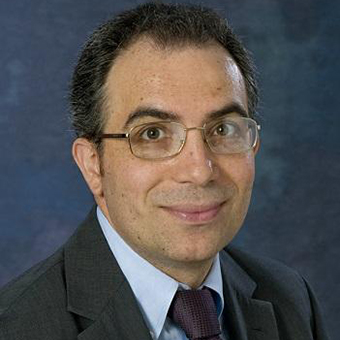Overcoming Resistance
Jacqueline Mitchell (BIDMC Communications) 617-667-7306, jsmitche@bidmc.harvard.edu
AUGUST 30, 2018
Investigators reveal how nearby cells shield tumor cells from targeted therapy

BIDMC Research Briefs showcase groundbreaking scientific advances that are transforming medical care.
The maintenance workers of the vascular system, pericyte cells envelop the surface of blood vessels, supporting their stability, growth and survival. Given that blood vessel growth is one necessary component in tumor development and progression, researchers have lately been investigating the stem cell-like pericytes’ role in cancer.
In a recent paper published in the journal Clinical Cancer Research (CCR), Carmelo Nucera, MD, PhD, primary investigator in the thyroid cancer research program in the Division of Experimental Pathology in BIDMC’s Department of Pathology, and colleagues investigated the role of pericytes as part of the tumor microenvironment in the subset of papillary thyroid cancers modulated by a mutation of the BRAF cancer-promoting gene.
Nucera and colleagues evaluated the efficacy of BRAFV600E inhibitors, which are used to target the tumor’s mutation and act as therapeutic agents, both alone and in combination with another agent targeting the tyrosine kinase (TK) receptor-pathway mediated by pericytes. The scientists demonstrated that the combination therapy blocked tumor cell proliferation, increased cell death and otherwise damaged tumor cells in vitro. However, the team also showed that pericyte cells, in response to the therapy, released molecules to overcome the lethal effects of the drugs on the tumor cells.
“Our findings suggest that pericytes may be a double-edged sword in BRAFV600E therapy for metastatic and resistant papillary thyroid cancer, as they secrete factors that trigger resistance to BRAFV600E and TK inhibitors,” said Nucera, who is also an Assistant Professor at Harvard Medical School. “However, targeting these factors in turn might represent a novel therapeutic strategy with translational applications in clinical trials for patients with this type of aggressive tumors that have become resistant to conventional treatments including radioactive iodine.”
Nucera’s co-authors include co-lead authors Alessandro Prete and Agnes S. Lo, Swati S. Bhasin, Zeus A. Antonello, Danica M. Vodopivec, Soumya Ullas, Jennifer N. Sims, John Clohessy, Ann M. Dvorak, Tracey Sciuto, Manoj Bhasin, Jack Lawler, and S. Ananth Karumanchi of BIDMC; Peter M. Sadow of Massachusetts General Hospital; and Joanne E. Murphy-Ullrich of University of Alabama at Birmingham.
This work was supported by grants from the National Cancer Institute/National Institutes of Health (1R21CA165039-01A1 and 1R01CA18118301A1); the American Thyroid Association (ATA); ThyCa:Thyroid Cancer Survivors Association Inc. for Thyroid Cancer Research; the Guido Berlucchi Young Investigator research award 2013; and BIDMC/CAO Grants; and NIH grant 1R01CA175012.
About Beth Israel Deaconess Medical Center
Beth Israel Deaconess Medical Center is a leading academic medical center, where extraordinary care is supported by high-quality education and research. BIDMC is a teaching affiliate of Harvard Medical School, and consistently ranks as a national leader among independent hospitals in National Institutes of Health funding. BIDMC is the official hospital of the Boston Red Sox.
Beth Israel Deaconess Medical Center is a part of Beth Israel Lahey Health, a health care system that brings together academic medical centers and teaching hospitals, community and specialty hospitals, more than 4,700 physicians and 39,000 employees in a shared mission to expand access to great care and advance the science and practice of medicine through groundbreaking research and education.
